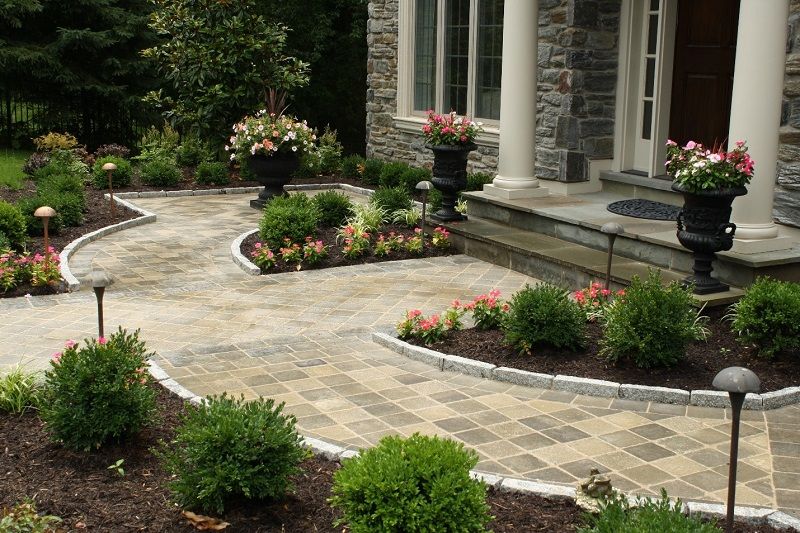The Definitive Guide for Landscape Design
Table of ContentsMore About Landscape DesignThe Greatest Guide To Landscape DesignThe 6-Minute Rule for Landscape DesignThe 25-Second Trick For Landscape Design
Traditional Japanese gardens are developed for solitude. They are heavily influenced by Buddhist, Shinto, and Taoist principles and seek to provide a spiritual place for people (Landscape Design). < It is widely known for its indigenous American and Spanish details, which add to the total simplicity, functionality, and reduced maintenance landscapeIt will save power by maintaining the interior air colder in the summer. They are likewise an excellent method to maintain individuals captivated.

Your exterior living area can grow even larger if a deck is included (Landscape Design). It supplies space for a grill, plants, and various other items that were formerly found in your yard. Making your yard kid-friendly is an exceptional method to encourage your youngsters to spend more time outside, delighting in the sunlight and fresh air.
The Ultimate Guide To Landscape Design

The 5 steps of the style process include: 1) carrying out a website stock and analysis, 2) determining your demands, 3) developing useful layouts, 4) creating theoretical style plans, and 5) drawing a final layout strategy. The very first three actions develop the aesthetic, functional, and horticultural needs for the layout. The last 2 steps then use those demands to the creation of the final landscape strategy.
This is a crucial step for both plant selection and positioning and finding household tasks and features. It is necessary since the same environment problems that affect the plantstemperature, moisture, rainfall, wind, and sunlightalso impact you, the user. The following step is to make a checklist of your needs and desiresthis aids you figure out how your lawn and landscape will be utilized.
The useful diagram is after that made use of to find the task spaces on the site and from this layout a conceptual plan is created. The last step is a final style that consists of all the hardscape and planting details that are needed for installation. Throughout the design process there are ten crucial points to think about: for plant option and activity place by considering what you want and require to help establish shapes and organize areas by assigning task locations and connecting with components for both the setting and the individual by utilizing massing and layering strategies such as shift areas and focal points in the products, the colors, and the surface appearances for the development and maintenance of plants by using lasting style practices A complete stock and analysis of the website is essential to identify the environmental problems for plant growth and the ideal usage of the site.
Getting The Landscape Design To Work
The kind of dirt establishes the nutrients and dampness readily available to the plants. It is constantly best to use plants that will flourish in the existing soil. Although soil can be changed, change is commonly pricey and most times ineffective. get more Existing plants can supply hints to the soil type. Where plants expand well, keep in mind the dirt problems and utilize plants with comparable expanding needs.
Topography and drain ought to also be kept in mind and all drain problems corrected in the proposed design. An excellent style will relocate water away from the residence and re-route it to various other areas of the backyard. Climate issues start with temperature: plants have to have the ability to endure the typical high and, most significantly, the ordinary low temperature levels for the region.
Sun/shade patterns, the quantity and size of exposure to sunlight or color (Figure 1), produce microclimates (sometimes called microhabitats). Recording site problems and existing vegetation on a base map will disclose the area of microclimates in the yard. Plants typically come under one or two of four microclimate categories-full sun, partial color, color, and deep color.
Figure 1. Sun and color patterns. Credit Scores: Gail Hansen, UF/IFAS It is necessary to note all the status quo on a precise base map when doing the website supply (Number 2). Energies such as high-voltage line, septic systems, below ground energies and roofing overhangs establish plant area. Make use of a surveyor's plat of your home for the limits and place of your home.
6 Easy Facts About Landscape Design Shown
Identify the time and cash you are ready to place right into keeping the plants and hardscape-be realistic about your intentions and capability. Suggested usage areas. Debt: Gail Hansen, UF/IFAS There are many different landscape layout motifs- from basic to facility, however it is handy to pick one to direct your plant and material selection.
Numerous people locate it helpful to about his search in horticulture magazines and publications for concepts. This is a great start, yet know that the gardens in the photos were selected due to the fact that they are impressive examples. Look at the images with an important eye to gather concepts that you can adjust to your passion degree, your budget plan and your site.
